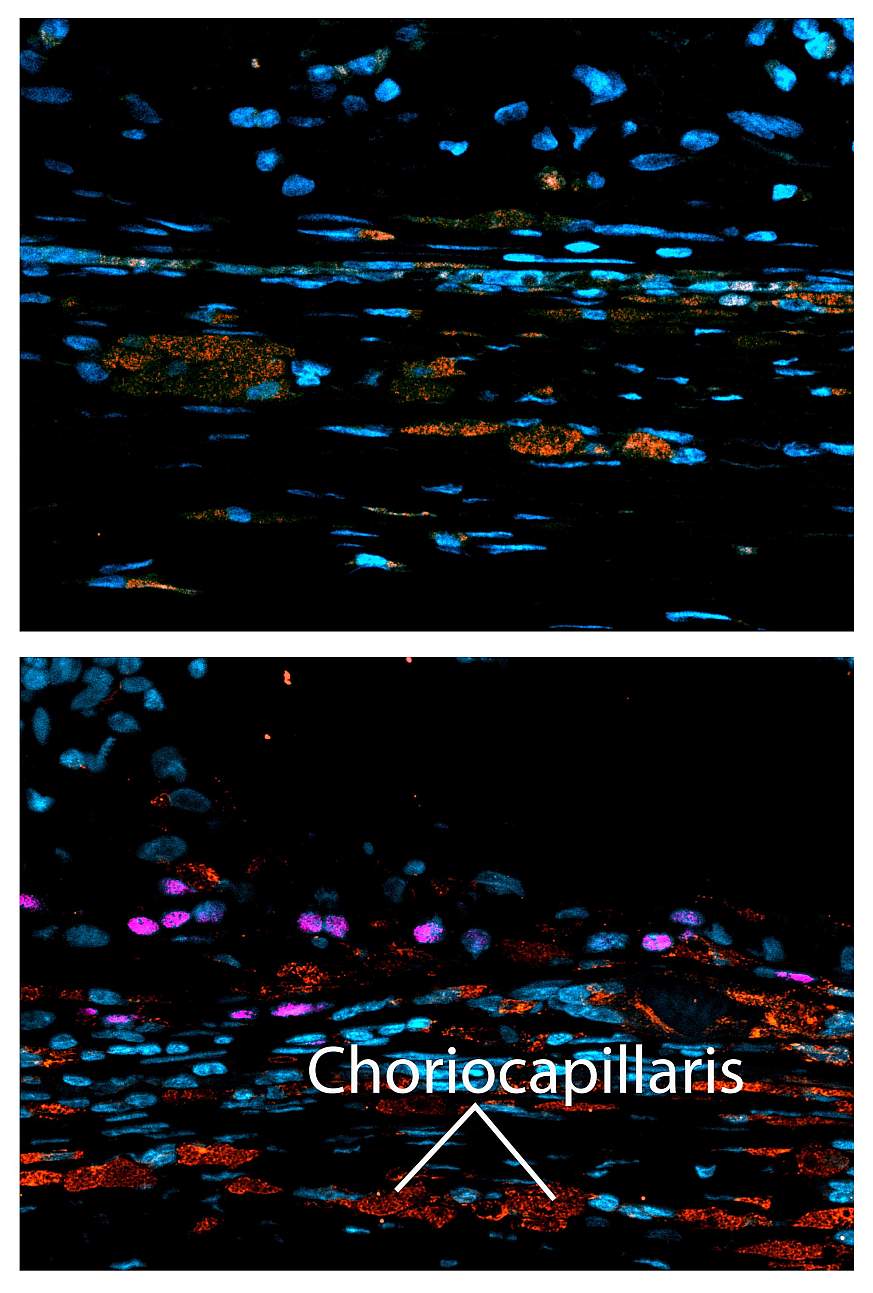You are here
Media Advisory
Thursday, May 22, 2025
NIH scientists test in an animal model a surgical technique to improve cell therapy for dry AMD
The technique may enable higher doses and combinations of cell therapies.

What
National Institutes of Health (NIH) scientists have developed a new surgical technique for implanting multiple tissue grafts in the eye's retina. The findings in animals may help advance treatment options for dry age-related macular degeneration (AMD), which is a leading cause of vision loss among older Americans. A report about the technique published today in JCI Insight.
In diseases such as AMD, the light-sensitive retina tissue at the back of the eye degenerates. Scientists are testing therapies for restoring damaged retinas with grafts of tissue grown in the lab from patient-derived stem cells. Until now, surgeons have only been able to place one graft in the retina, limiting the area that can be treated in patients, and as well as the ability to conduct side-by-side comparisons in animal models. Such comparisons are crucial for confirming that the tissue grafts are integrating with the retina and the underlying blood supply from a network of tiny blood vessels known as the choriocapillaris.
For the technique, investigators designed a new surgical clamp that maintains eye pressure during the insertion of two tissue patches in immediate succession while minimizing damage to the surrounding tissue.
In animal models, the scientists used their newly designed surgical technique to compare two different grafts placed sequentially in the same experimentally induced AMD-like lesion. One graft consisted of retinal pigment epithelial (RPE) cells grown on a biodegradable scaffold. RPE cells support and nourish the retina’s light-sensing photoreceptors. In AMD, vision loss occurs alongside the loss of RPE cells and photoreceptors. In the lab, RPE cells are grown from human blood cells after they’ve been converted into stem cells. The second graft consisted of just the biodegradable scaffold to serve as a control.
Post surgery, scientists used artificial intelligence to analyze retinal images and compare the effects of each graft. They observed that the RPE grafts promoted the survival of photoreceptors, while photoreceptors near scaffold-only grafts died at a much higher rate. Additionally, they were able to confirm for the first time that the RPE graft also regenerated the choriocapillaris, which supplies the retina with oxygen and nutrients.
The findings expand on the capability demonstrated in an ongoing, NIH-led first-in-human clinical trial of patient-derived RPE grafts for the dry form of AMD.
The work was supported by the National Eye Institute Intramural Research Program
Who
Kapil Bharti, Ph.D., scientific director, NEI, is available for interviews.
Reference
Gupta R, Bunea I, Alvisio B, Barone F, Gupta R, Baker D, Qian H, Daniele E, Contreary CG, Montford J, Sharma R, Maminishkis A, Singh MS, De Quadros Costa MTM, Kashani AH, Amaral J, Bharti K. “iPSC-RPE patch preserves photoreceptors and regenerates choriocapillaris in a pig outer regina degeneration model”. Published May 22, 2025 in JCI Insight
Previous research
Ruchi Sharma et al. Clinical-grade stem cell–derived retinal pigment epithelium patch rescues retinal degeneration in rodents and pigs.Sci. Transl. Med. (2019). DOI:10.1126/scitranslmed.aat5580
About the NEI: NEI leads the federal government’s efforts to eliminate vision loss and improve quality of life through vision research…driving innovation, fostering collaboration, expanding the vision workforce, and educating the public and key stakeholders. NEI supports basic and clinical science programs to develop sight-saving treatments and to broaden opportunities for people with vision impairment. For more information, visit https://www.nei.nih.gov.
About the National Institutes of Health (NIH): NIH, the nation's medical research agency, includes 27 Institutes and Centers and is a component of the U.S. Department of Health and Human Services. NIH is the primary federal agency conducting and supporting basic, clinical, and translational medical research, and is investigating the causes, treatments, and cures for both common and rare diseases. For more information about NIH and its programs, visit www.nih.gov.
NIH…Turning Discovery Into Health®
